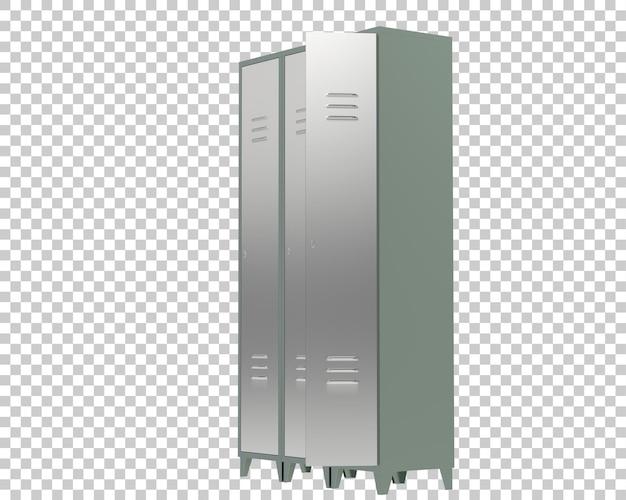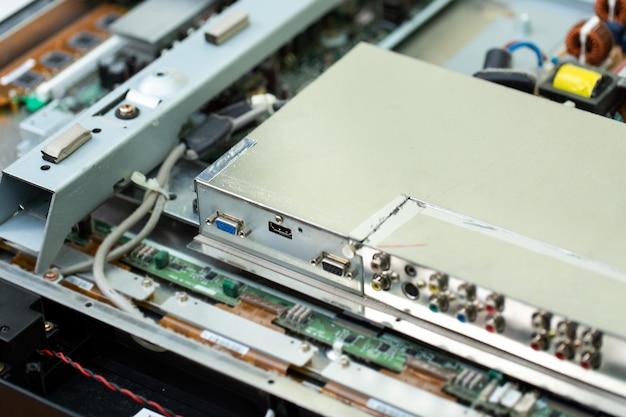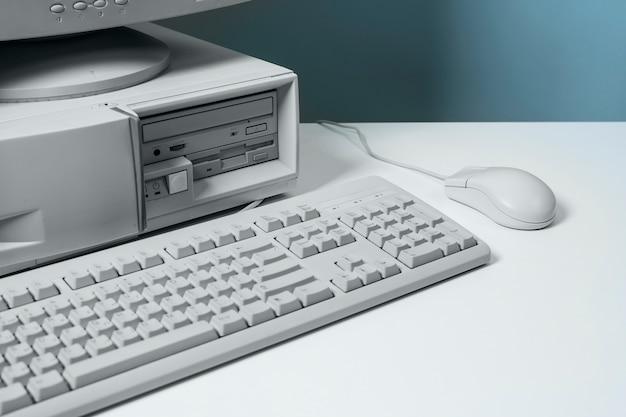Are you in search of a reliable and powerful server system for your business? IBM P Series might be the answer you’ve been looking for. IBM P Series, also known as IBM Power Systems, is a family of high-performance servers designed for commercial and enterprise-level computing.
The IBM P Series has been around for decades and has gone through several upgrades and improvements. The latest version of IBM P Series is the IBM Power 11, which is designed for smarter computing and hybrid cloud strategies.
You may have also heard about IBM iSeries, which is often regarded as the predecessor to IBM P Series. However, both systems have their unique features and capabilities.
But what makes IBM P Series stand out from other server systems? What are its key features, server models, and operating systems? What is the difference between IBM iSeries and P Series? In this comprehensive guide, we’ll answer all these questions and more, so keep reading to learn everything you need to know about IBM P Series.
The Power of IBM P Series: Unleashing High-Performance Computing
Are you looking for a high-performance computing system? Look no further than IBM P Series! This series of servers is designed to help you achieve your business objectives quickly and effectively. Whether you are looking to build a database, consolidate your workloads, or run complex applications, IBM P Series has got you covered.
High Efficiency and Performance
IBM P Series offers improved data center efficiency and exceptional performance. The system is engineered with Power technology, which allows you to manage a massive workload and perform computing-heavy tasks with ease. With Power technology, you will experience enhanced resource sharing, high-speed I/O, and improved virtualization, all of which show off the best of IBM technology.
Versatility
IBM P Series is versatile and flexible, making it easy for you to integrate it with other technologies. Unlike other servers, P Series not only works with IBM technologies but also accommodates other platforms, including Windows and Linux. By leveraging IBM P Series’ versatility, you can easily integrate your diverse IT infrastructure in a centralized location.
Reduced Infrastructure Cost
IBM P Series has a reputation for being cost-effective. With the system, you can reduce the number of servers you need to install and maintain, which ultimately translates into less hardware and software operational costs. Additionally, IBM P Series’ green technology ensures optimal energy consumption, therefore reducing the overall cost of running your data center.
High Level of Security
Are you concerned about the security of your data? IBM P Series is engineered with a high level of security. The system has a variety of security features, including secure data encryption and authenticated users. IBM P Series also includes a self-encrypting hard drive and tamper-resistant security systems designed to protect your data at all times.
Conclusion: Why IBM P Series is Worth Your Investment
IBM P Series is an excellent investment for businesses looking to achieve high-performance computing. The system’s versatility, high efficiency, and cost-effectiveness make it a must-have for all data centers, both small and large. With IBM P Series, you will also enjoy improved security and increased productivity levels, ensuring fast, efficient, and reliable services. Whether you are consolidating workloads, building a database, hosting web applications, or running the most complex simulations, IBM P Series has got you covered. Invest in IBM P Series today and enjoy exceptional computing performance at the lowest operational costs!
IBM Power 11: The Power of Innovation
IBM Power 11 is the latest release of IBM’s Power Systems servers. It is designed to deliver cutting-edge compute capabilities for businesses of all sizes. The Power 11 system offers several benefits, including enhanced performance, better efficiency, and improved security.
Enhanced Performance
IBM Power 11 is built on IBM’s latest and most powerful processor technology, the IBM Power10. The Power10 processor features an out-of-order execution engine, providing a significant boost in performance. It can execute instructions faster, resulting in faster data processing. Additionally, the IBM Power 11 system has an expanded memory capacity, allowing applications to access more memory and run more efficiently.
Better Efficiency
IBM Power 11 also offers better efficiency. The new system has a higher energy efficiency rating than previous models, delivering better performance per watt. Additionally, the system’s memory subsystem is optimized for better performance, using advanced energy-saving technologies. This results in reduced energy consumption and lower operating costs.
Improved Security
IBM’s Power 11 system comes with enhanced security features. The system implements advanced encryption algorithms, providing data protection and secure processing for sensitive operations. Additionally, the Power 11 system has built-in security mechanisms that protect against firmware-level attacks.
In summary, IBM Power 11 is the latest and the most innovative entrant in the Power Systems server lineup. It is designed to deliver the best performance, efficiency, and security features for businesses of all sizes. With its advanced processor technology and optimized memory subsystem, the Power 11 system can provide a powerful compute capability, utilizing fewer resources than its predecessors. Its enhanced security features safeguard data and application processing at the hardware level, providing peace of mind to businesses.
IBM i Series: The Power of Integration
When it comes to enterprise systems, the IBM i Series is a heavy hitter. This powerful system is designed to integrate seamlessly with existing IBM hardware and software, allowing businesses to streamline their operations and improve efficiency.
Streamline Operations with IBM i Series
One of the key benefits of the IBM i Series is its ability to integrate with other IBM hardware and software, including the popular IBM p Series. This integration allows businesses to streamline their operations by consolidating their systems onto a single platform.
Maximize Efficiency with IBM i Series
In addition to streamlining operations, the IBM i Series is also designed to maximize efficiency. Its advanced architecture and high-speed processing power ensure that even the most complex tasks can be completed quickly and accurately.
Harness the Power of IBM i Series
While the IBM i Series may not be as well-known as some other enterprise systems, it offers a powerful set of features and benefits that can help businesses of all sizes to improve their operations and maximize efficiency. Whether you’re looking to streamline your operations or improve your bottom line, the IBM i Series is a system worth considering.
In conclusion, the IBM i Series is a powerful enterprise system that offers a range of benefits for businesses of all sizes. Whether you’re looking to streamline your operations or maximize efficiency, this system has the features and capabilities you need to succeed. So why wait? Start harnessing the power of the IBM i Series today!
What is an IBM p9
If you’re in the market for enterprise-level hardware, you’ll want to know about the IBM p9. The IBM p9 is a powerful server designed to deliver uncompromising performance, security, flexibility, and scalability. It’s perfect for large organizations that need to handle complex workloads and demanding applications.
Performance
The IBM p9 is the most powerful server in the IBM Power Systems family. It boasts up to 4x performance improvement over its predecessor, the IBM p8. The p9 is built on IBM’s POWER9 processor, which is expertly designed to handle data-intensive workloads and provide unprecedented speed and efficiency. It also has the capability to run multiple operating systems simultaneously, making it incredibly versatile.
Security
Data security is a top concern for many organizations, and the IBM p9 is designed with this in mind. It features an advanced security co-processor that provides unique encryption and key management capabilities. It also has a firmware-based security subsystem, which ensures that it’s protected from both internal and external threats.
Flexibility
The IBM p9 is incredibly flexible, thanks to its ability to run both IBM AIX and IBM i operating systems, as well as Linux. It can also be configured to run traditional workloads, cloud-based workloads, AI, and machine learning workloads. This versatility makes the IBM p9 the perfect choice for organizations that need to adapt to changing market conditions.
Scalability
As your organization grows, so do your computing needs. Fortunately, the IBM p9 is designed to easily scale to accommodate your workload. It can be scaled up to 24TB of memory and up to 192 cores, ensuring that it can handle even the most demanding applications and workloads.
Overall, the IBM p9 is an incredibly powerful, secure, flexible, and scalable server that can handle even the most complex workloads. It’s an investment that will pay off in terms of performance, reliability, and efficiency. If you’re in the market for enterprise-level hardware, you should definitely consider the IBM p9.
IBM P Series End of Life
If you’re in the market for an IBM P Series server, it’s essential to know when a particular model enters end-of-life (EOL) status. When a P Series server reaches EOL, IBM no longer provides software support or hardware maintenance. Here is what you need to know about IBMP Series end of life:
What is End-of-Life (EOL)
A product reaches EOL when the manufacturer stops supporting it. They will no longer release any updates or provide technical support. EOL is typically the last stage in a product’s lifecycle before it becomes obsolete.
Why is it Important to Know P Series EOL Dates
Knowing when a P Series server reaches EOL is crucial because it tells you how long IBM will continue to support the hardware and software. Once a server reaches EOL, you’ll have to purchase new equipment or run unsupported software. Running outdated software can make your system vulnerable to security breaches, and unsupported software can cause significant performance problems.
What Are the P Series EOL Dates
IBM publishes end-of-life dates for each P Series server model. You can find these dates on the IBM website or by contacting your IBM representative. The specific date can vary based on the model, but every published date provides a range of three to five years from the date of the announcement.
How Can You Plan for P Series EOL
Planning for P Series EOL involves ensuring that you have a plan in place for replacing or upgrading your equipment when the time comes. You should also plan to upgrade your software regularly, so you’re not running outdated or unsupported software on your hardware. Failing to keep up with software updates can also put you at risk of security breaches and data loss.
In conclusion, understanding IBM P Series end of life is an essential aspect of managing data center infrastructure. Knowing the EOL dates for hardware and software helps you plan for upgrades and ensures that you’re running supported software on your equipment. Keep an eye on IBM’s published EOL dates and plan ahead to avoid any disruptions in your operations.
What Operating Systems Can Run on IBM Power
IBM Power Systems, formerly known as IBM p Series, provide an impressive array of performance and scalability features for enterprise workloads. But one question that intrigues upfront customers is which operating system can run on IBM Power Systems? Here is an overview of some of the operating systems that IBM Power supports.
AIX – The IBM Unix Operating System
AIX is IBM’s proprietary Unix operating system that runs on IBM Power Systems. AIX delivers a high-performance, reliable, and secure Unix environment that is optimized for IBM Power Systems. AIX supports enterprise applications and databases, including Oracle and SAP HANA, and it’s a robust choice for mission-critical workloads.
IBM i – The Integrated Operating System
IBM i, formerly known as AS/400, is IBM’s integrated operating system that runs on IBM Power Systems. IBM i offers a reliable, secure, and scalable operating system tailored for mid-size businesses and small enterprises. IBM i has a single-integrated database, robust middleware, and an intuitive UI, and it’s excellent for running critical workloads that require high availability, scalability, and security.
Red Hat Enterprise Linux – The Open-Source Linux Operating System
Red Hat Enterprise Linux (RHEL) is an enterprise-class Linux operating system that is certified to run on IBM Power Systems. RHEL is an open-source operating system that offers stable and secure operations, high performance, and advanced scalability features, making it ideal for cloud deployments and virtualization workloads.
SUSE Linux Enterprise – The Enterprise-Grade Linux Operating System
SUSE Linux Enterprise Server (SLES) is an enterprise-grade open-source Linux operating system qualified to run on IBM Power Systems. SLES provides robust features like high availability, security, and speed. The operating system supports critical applications like SAP HANA databases, and it is excellent for running mission-critical applications.
In conclusion, IBM Power Systems support a range of operating systems. AIX, IBM i, Redhat, and SUSE are just some of the operating systems IBM Power Systems can accommodate. To make things clear, the type of operating system used will depend on the workload and user preference. As you explore your IT infrastructure needs, consult your IBM Power partner for advice on selecting the right IBM Power System and operating system for your workload.
IBM P Series Server Models
IBM P Series servers are one of the most popular server models in the market today. They are built with the latest technology, making them highly reliable, scalable, and efficient. The P Series servers come in different models, each with unique features and capabilities. In this subsection, we’ll take a closer look at some of the top IBM P Series server models.
IBM P720
Whether you’re running a small or medium-sized business, the IBM P720 has got you covered. This server is designed to deliver unbeatable performance, thanks to its high-speed processors, advanced memory bandwidth, and enhanced I/O capabilities. With the P720, you can run multiple workloads simultaneously, ensuring maximum utilization of resources and optimal performance.
IBM P740
The IBM P740 is an ideal server for mid-sized businesses looking for a powerful and cost-effective solution for their data processing needs. This server is built with advanced RISC processing technology and comes with features such as virtualization, clustering, and advanced memory management. The P740 is also highly scalable, allowing you to expand your capacity as your business grows.
IBM P750
If you’re running a large enterprise-level business with demanding data processing requirements, the IBM P750 is your go-to server. This powerhouse is designed to handle the most complex workloads with ease. With up to 32 cores and 4TB memory capacity, the P750 delivers unmatched performance, scalability, and reliability.
IBM P770
The IBM P770 is another high-performing and robust server designed for large-scale enterprises. This server comes with advanced virtualization capabilities that allow easy consolidation of workloads, increasing utilization of resources, and reducing operating costs. The P770 is also highly secure, with advanced data encryption features and improved firmware security.
In summary, the IBM P Series servers are a reliable and cost-effective solution for businesses of all sizes. The P720, P740, P750, and P770, are just a few of the many models available in the market. Each model is designed to suit specific business needs, ensuring maximum performance and efficiency. When selecting a server model, it’s essential to consider factors such as workload, scalability, and budget, to ensure you get the most from your investment.
IBM iSeries vs pSeries
When it comes to IBM servers, you might have come across both iSeries and pSeries. While these two models are part of IBM’s Power Systems family, there are a few essential differences between them that are worth highlighting.
What is IBM iSeries
IBM iSeries, formerly known as AS/400, is a mid-range server designed for small and medium-sized businesses. One of the defining features of iSeries is its integration with IBM’s intuitive operating system, IBM i. IBM i provides end-to-end integration for a wide range of business applications, including database, security, and web-serving capabilities. It is ideal for businesses that prioritize reliability, security, and ease of use.
What is IBM pSeries
IBM pSeries, on the other hand, is a high-end server designed for large enterprises and mission-critical applications. It runs on the AIX operating system, which is based on Unix. pSeries servers boast great scalability, performance, and availability, making them suitable for industries such as finance, government, and healthcare. They can handle extremely complex tasks with ease, making them an excellent choice for organizations with high-performance computing needs.
Key Differences
The key difference between iSeries and pSeries is their target market. While iSeries is geared towards small and medium-sized businesses, pSeries is designed for large enterprises that demand high scalability and reliability. Another significant difference is the operating system. While iSeries uses the IBM i operating system, pSeries uses AIX, a Unix-based operating system. Additionally, pSeries servers use more advanced hardware configurations and offer more advanced features such as fault-tolerance capabilities, logical partitioning, and virtualization options that iSeries doesn’t have.
In conclusion, both IBM iSeries and pSeries servers have their strengths and weaknesses. The choice between the two will depend on your organization’s needs and budget. If you’re a small or medium-sized business, iSeries might be the better option for you. If you’re a large enterprise with complex computing needs, pSeries is likely the better fit for you. Whatever your choice, you can be confident that IBM’s Power Systems family will provide you with cutting-edge technology and reliability that your organization needs to succeed.



